

Open hours/Closed
OPEN HOURS
9:30 – 17:00
*Final Admission 30 minutes before closing.
Parking lot gate closed nightly
8:30 p.m.-8:15 a.m.
Please check the schedule calendar for details.
CLOSED
Please refer to the schedule/calendar.
Admission
Exhibition
Admission fees differ for each exhibition; please check exhibition details.
Permanent Exhibition
─ 700yen (560yen) for adult
─ 400yen (320yen) for college student
─ free for High school students and younger
*( ) indicate prices for those in groups of 20 or more. Admission prices for temporary exhibitions vary.
Access map
Location
Aomori Museum of Art
185 Chikano, Yasuta,
Aomori City, Aomori Pref. 038-0021, Japan
TEL 017-783-3000
FAX 017-783-5244
MAIL bijutsukan@pref.aomori.lg.jp
Access
(JR)
10 min.by car from JR Shin-Aomori station
(JR)
20 min. by car from JR Aomori station
(Airport)
30 min. by car from Aomori Airport
(Highwey)
5 min. from Aomori I.C. on the Tohoku Expressway
(BUS)
20 min. by bus bound for "SANNAI MARUYAMA ISEKI" from JR Aomori Station.
The Bus Stop "Kenritsu-bijutsukan-mae"
Museum map
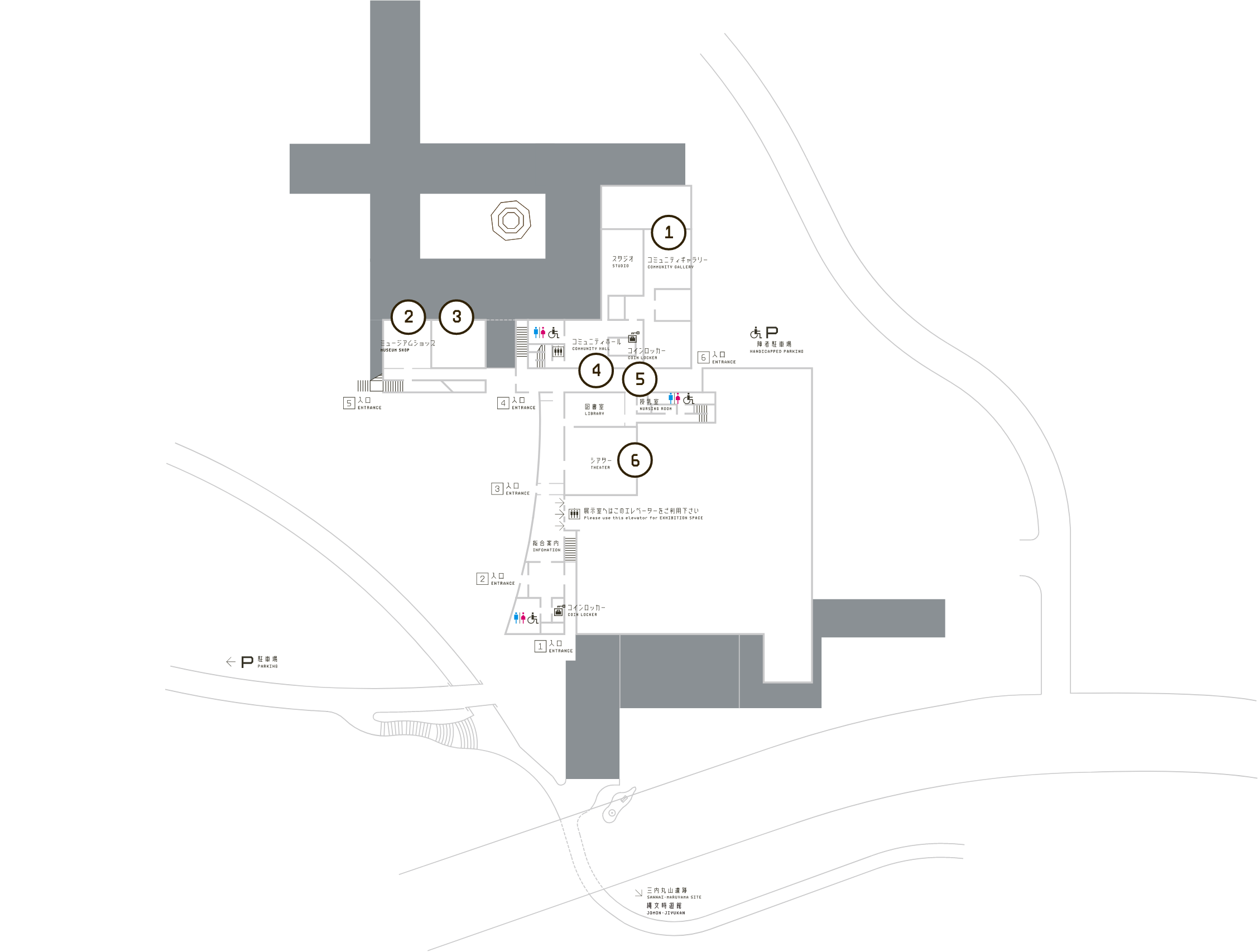

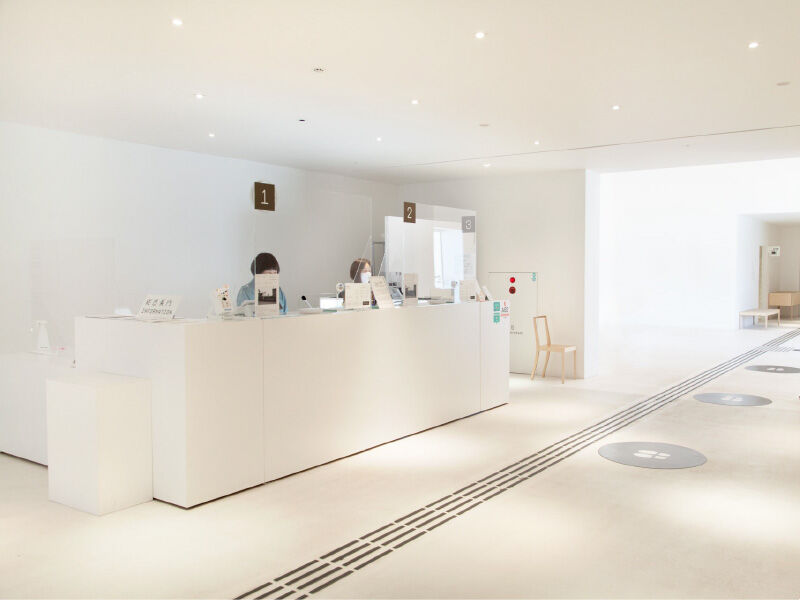
Entrances
Neon museum logos and an informational sign with a map and the museum’s hours at each entrance make it easy for visitors to find an entrance even at night.
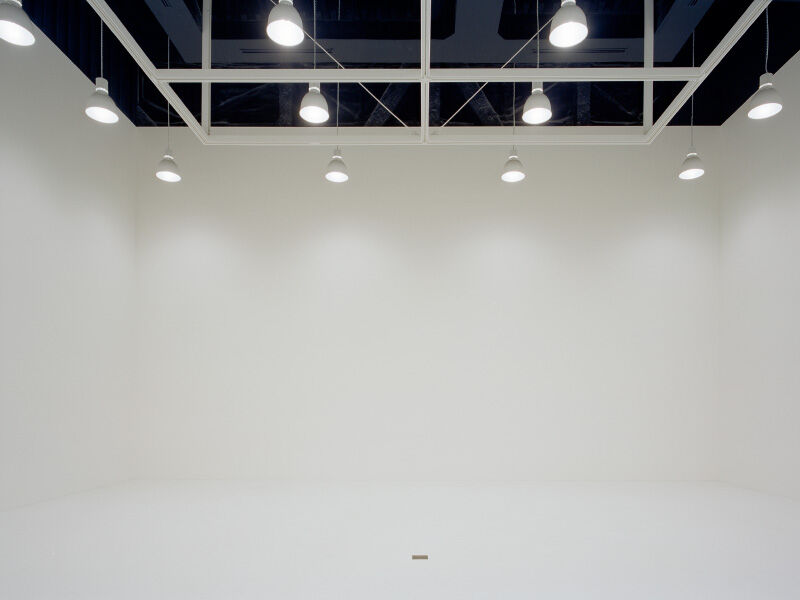
1. Community Gallery
Head to the right and back of the Community Hall to find the Community Gallery, a space consisting of three exhibition rooms for featuring the artistic activities of prefectural residents. Possessing its own service entrance, the gallery is a part of the museum yet can be used independently from the rest of the museum in terms of both space and time.
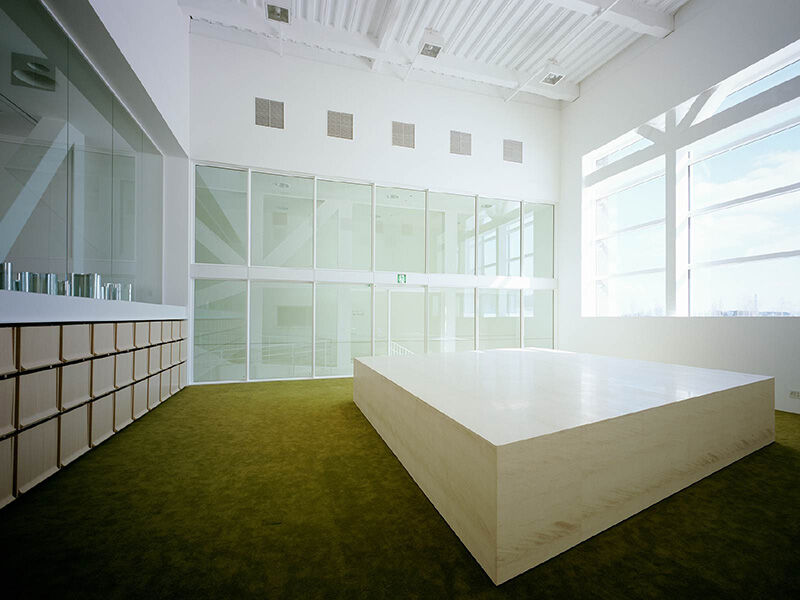
2. Museum Shop
The Museum Shop is located at the tip of the east wing jutting out into the adjoining park. Shop for museum goods after viewing the museum’s exhibitions. The Museum Shop has its own entrance, enabling visitors to enter directly from the park without having to go through the rest of the museum.
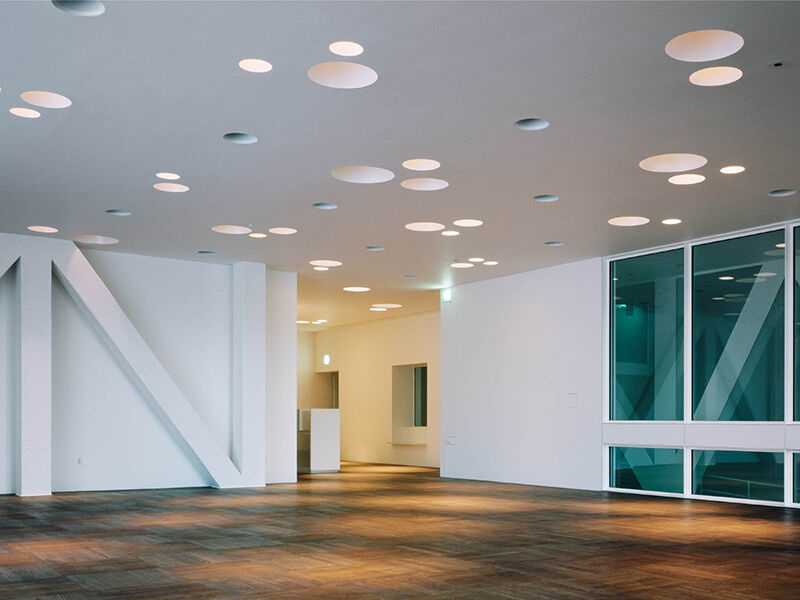
3. Cafe
A cafe located at the tip of the east wing jutting out into the adjoining park. The cafe can be entered from the museum or directly from the park. The cafe offers a view of the Hakkakudo, a work commissioned from artist Yoshitomo NARA installed on the “floating island” on the museum’s south side.
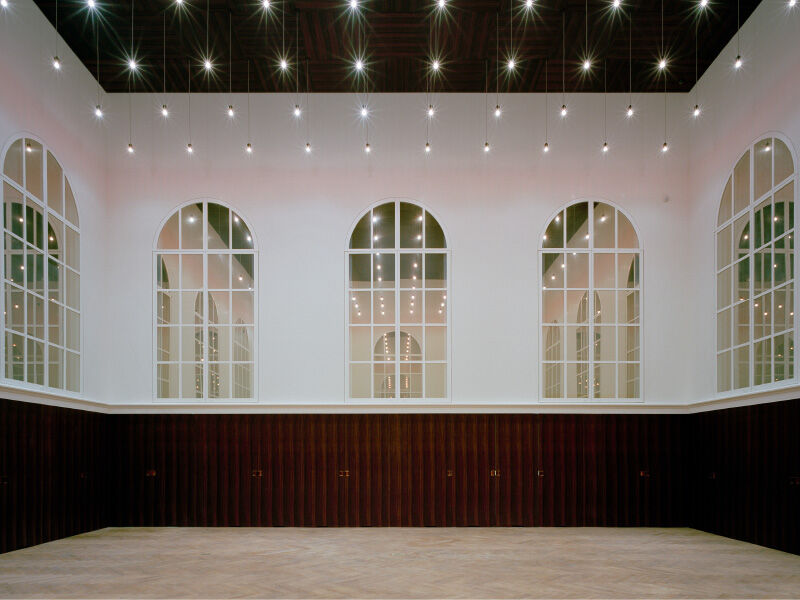
4. Community Hall
Connected to the Community Gallery and Workshop, the interior of this hall is designed such that the view is identical no matter from which entrance one enters. Entry is free and the space can be used to take a break; food and beverages are also allowed.
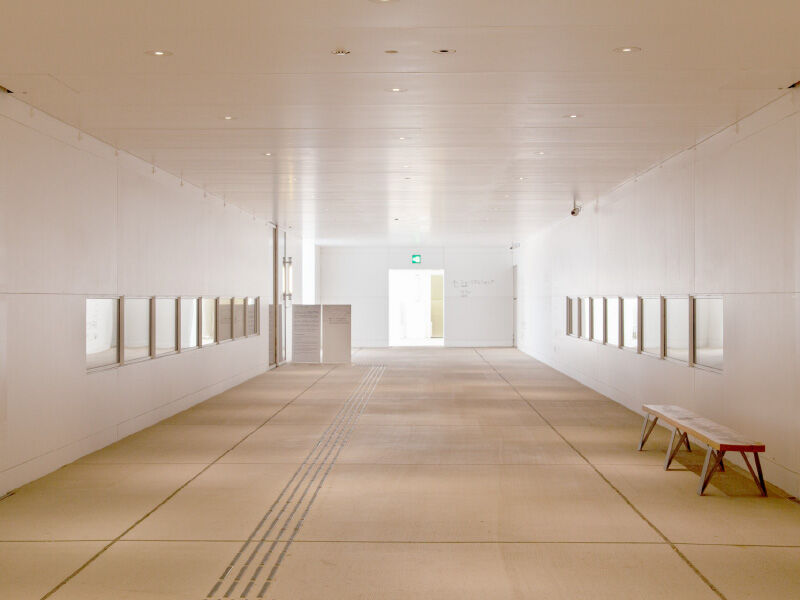
5. The Seemingly-Indoor Outdoor Passageway
This passageway connecting the museum building’s east and west sides also provides entry to the Library and Community Hall. The walls and ceiling consist of 4.5 millimeter-thick steel plates painted white, creating a tunnel of soft, reflected light.
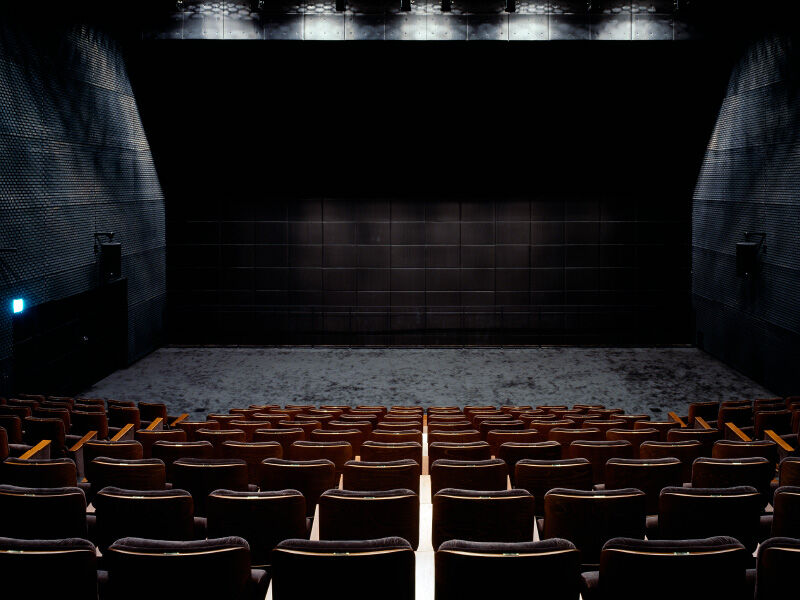
6. Theater
This approximately 200-seat theater is used for movies, video art, plays, lectures and other events. The stage’s back wall is movable; when completely open, the Theater merges with the Aleko Hall, revealing backdrops painted for the ballet Aleko.
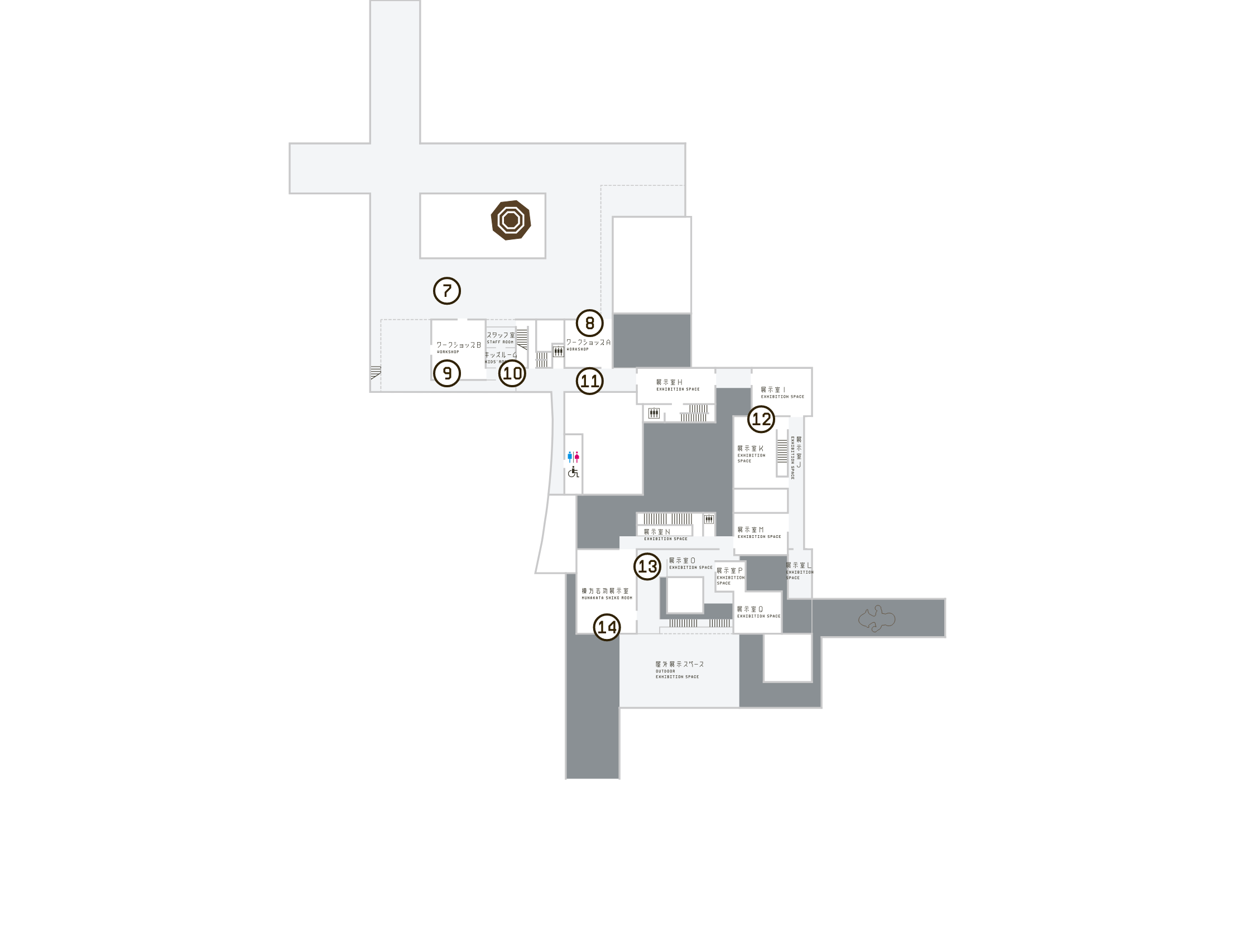

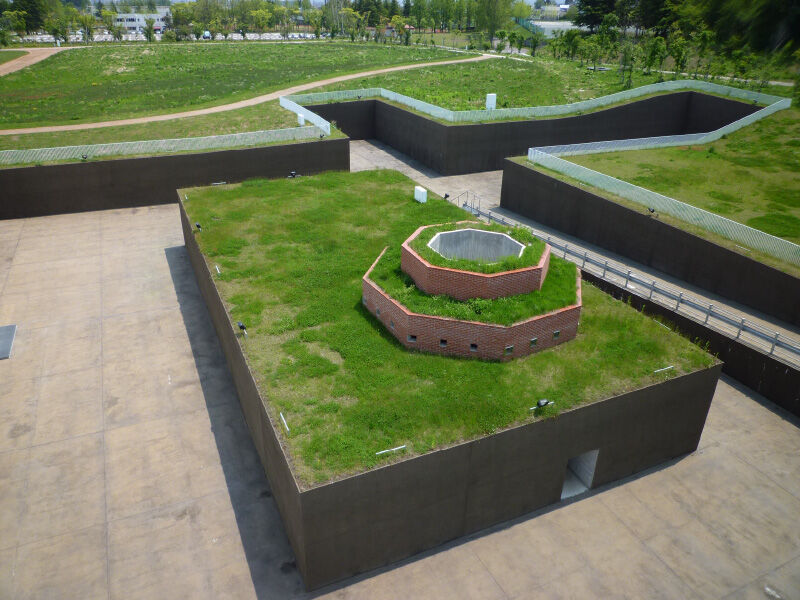
7. Creative Yard
The external trenches connected to the Workshop are outfitted with plumbing, enabling creative activities making use of water.
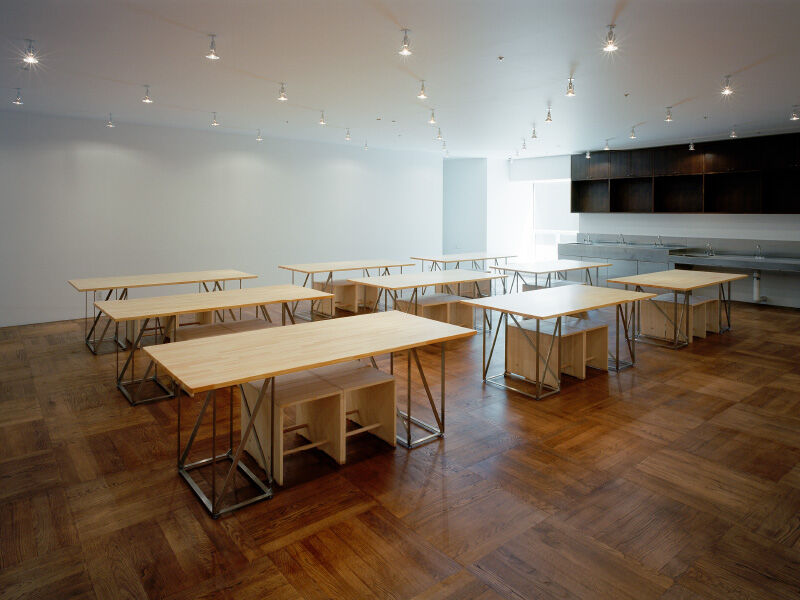
8. Workshop A (Creative Activity Studio)
A space for promoting education. In contrast with Workshop B, Workshop A is primarily used for programs for children.
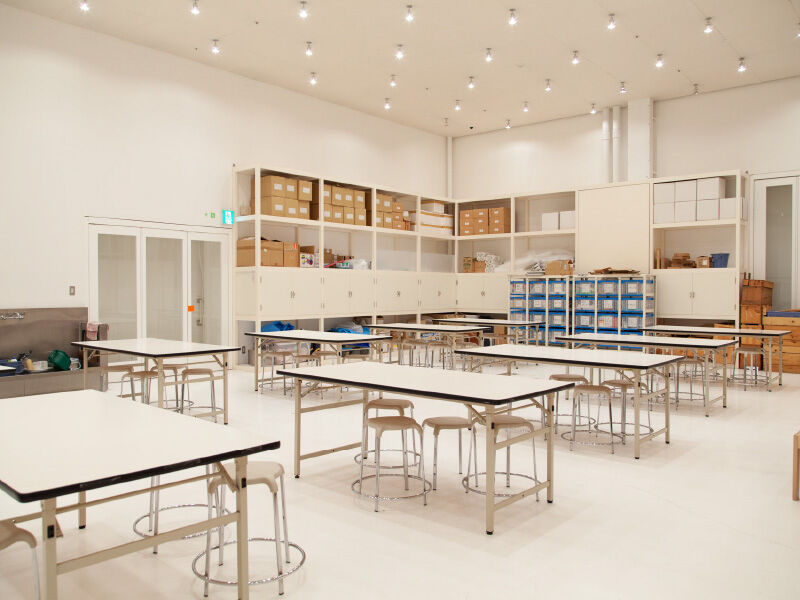
9. Workshop B
A space for promoting education. In contrast to Workshop A, Workshop B is designed and outfitted with equipment for professional use. The room is connected to an outdoor space shielded from rain and snow, enabling it to be utilized seamlessly with the Creative Yard trenches.
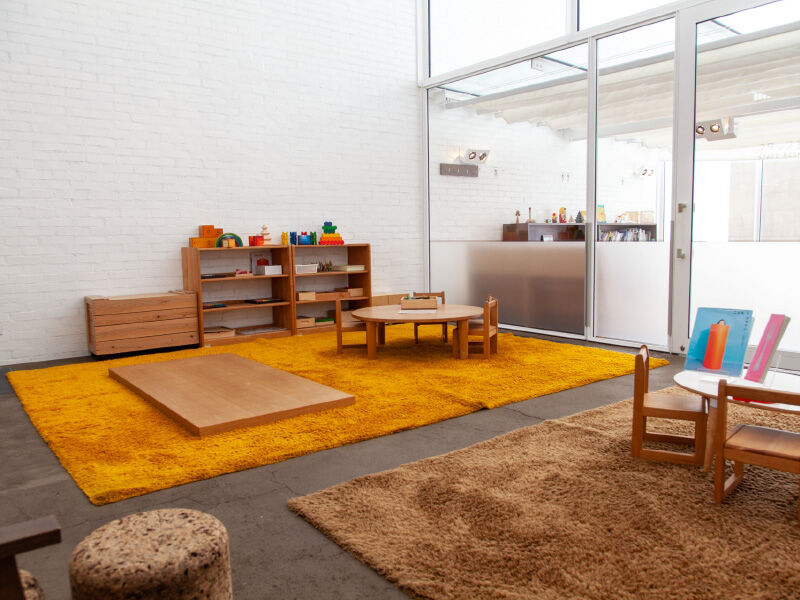
10. Children’s Playroom
A room where children can read picture books and play with toys. The ceiling is outfitted with installation-style lighting by museum architect Jun Aoki and artist Hiroshi Sugito.
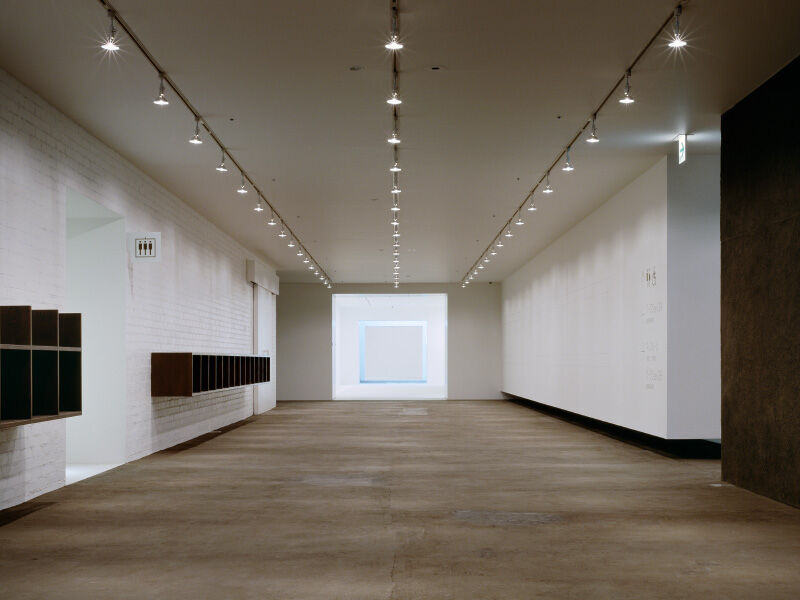
11. Workshop Hallway
Designed so that it can also be used as an exhibition space, the walls are furnished with steel sheets enabling flat works of art created in the Workshop to be displayed with magnets. It can also be used in conjunction with the adjoining Exhibition Space H.
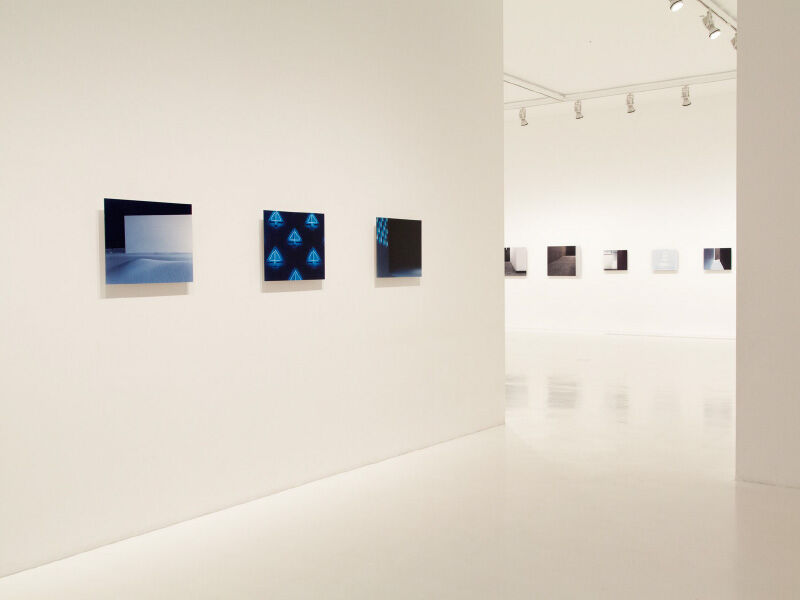
12. Exhibition Spaces H-Q, MUNAKATA Shiko Room
10 distinctive exhibition rooms of varying sizes, labeled Exhibition Spaces H through Q, are located on floor B1. The MUNAKATA Shiko Room is also located on this floor.
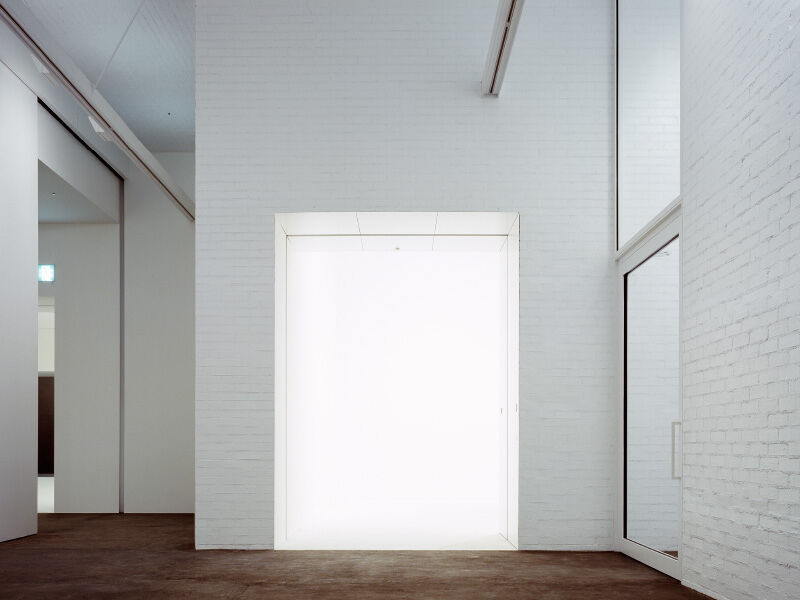
13. Exhibition Space: Brick
Exhibition Space O is a brick space. Take a second look and you’ll realize that the room was created by using glass to partition off a space formed by an inward-turning portion of the outer wall. This is one of spaces which characterize the Aomori Museum of Art.
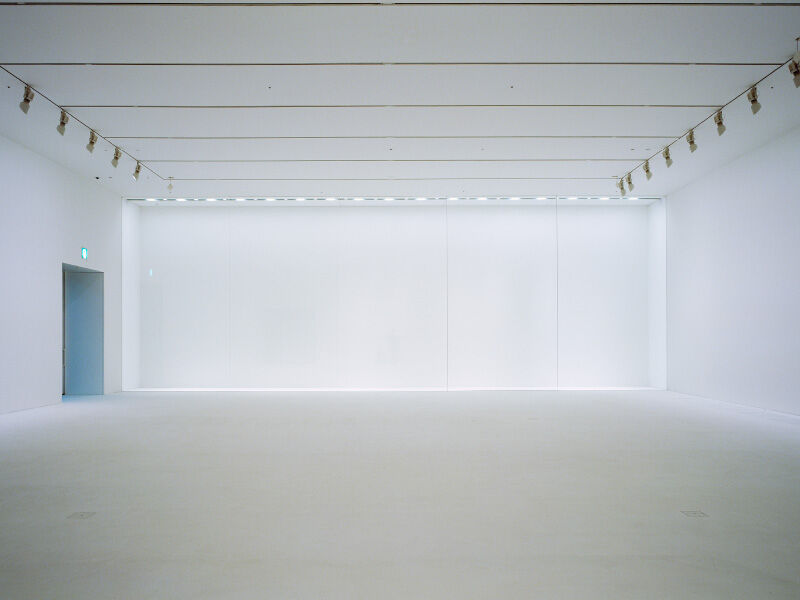
14. Exhibition Space: MUNAKATA Shiko Room
The only exhibition space in the museum named after an artist. A huge piece of glass forming one wall reaches from floor to ceiling. This beautiful space was born out of a desire to ensure that nothing obstructs appreciation of the artworks contained within.
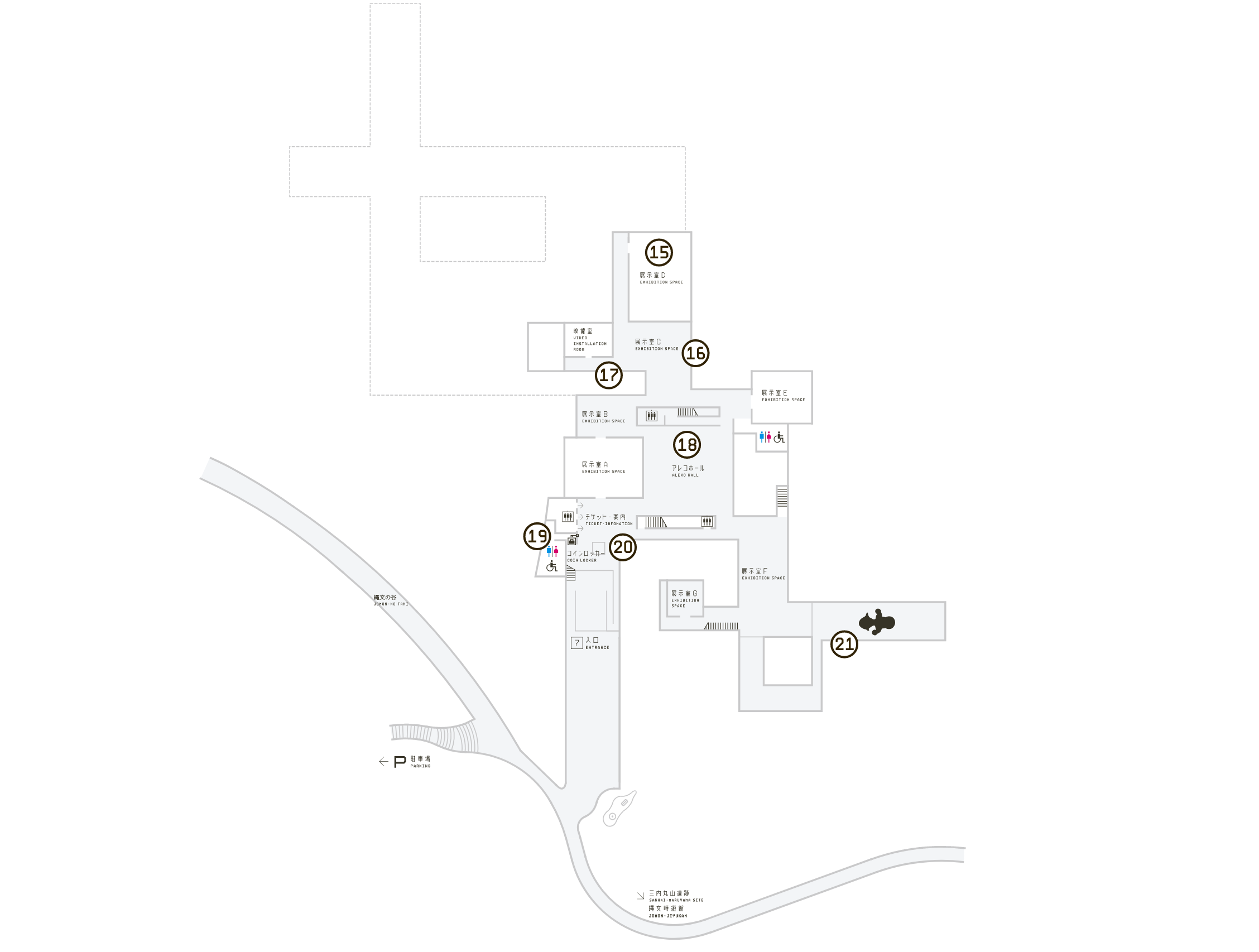

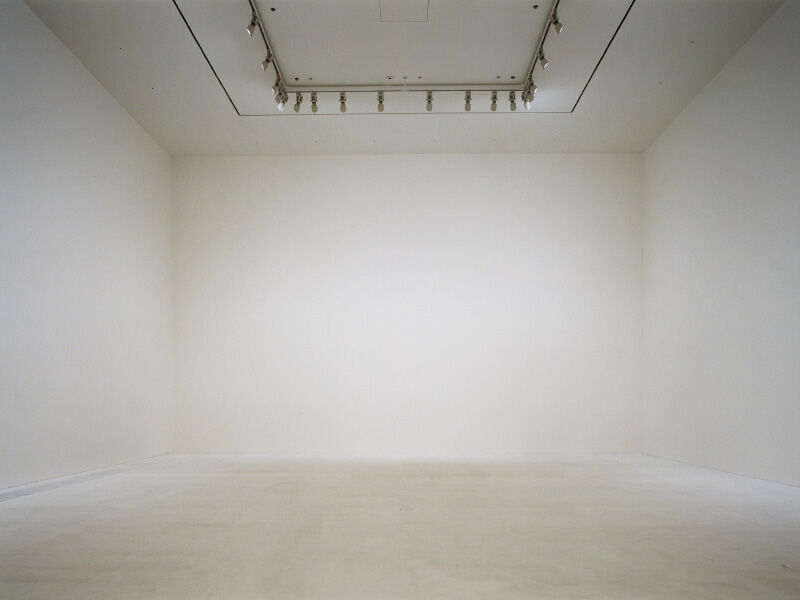
15. Exhibition Spaces: White spaces
The spaces inside the white cubes, seemingly having descended as-is from above, are pure white, including their walls, floors, and ceilings. Filled with light, they create a sense of floating in mid-air. These spaces have the effect of enshrouding exhibited artworks in light.
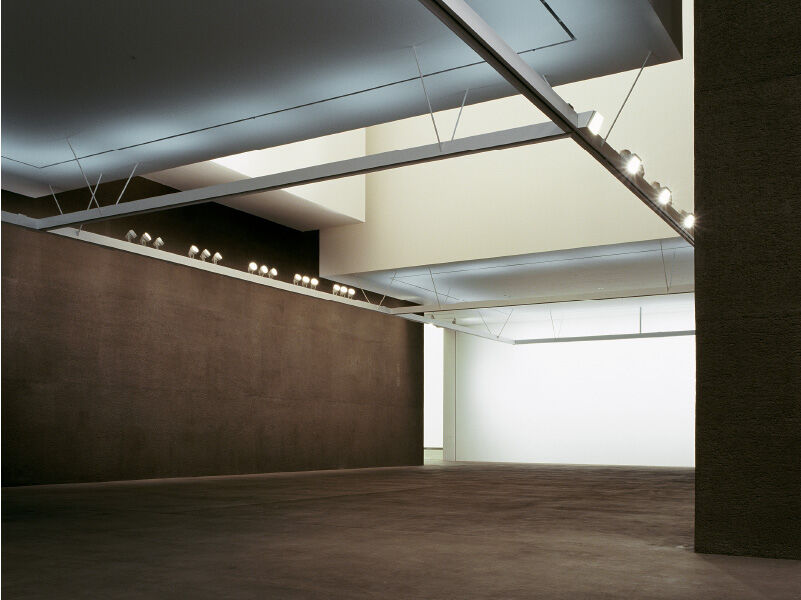
16. Exhibition Spaces: Dirt walls and floors
One of the museum’s most distinctive features, the design of these spaces was inspired by the Sannai-Maruyama Archaelogical Site. It is as if white cubes descended onto the dug-out trenches, forming these spaces within the museum.
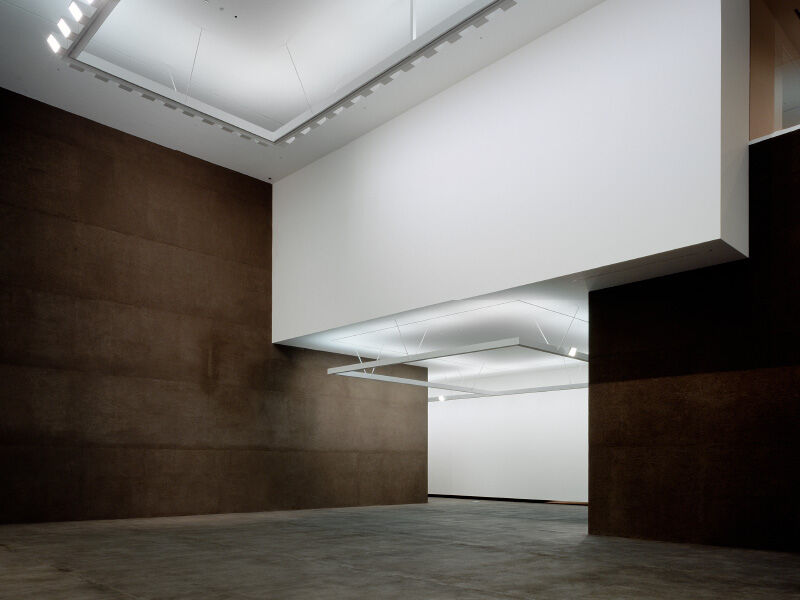
17. Exhibition Spaces A-G
Seven exhibition rooms, labeled Exhibition Spaces A through G, are located on floor B2. Connected to the Aleko Hall, four of the rooms are white cubes and three are constructed with bare dirt.
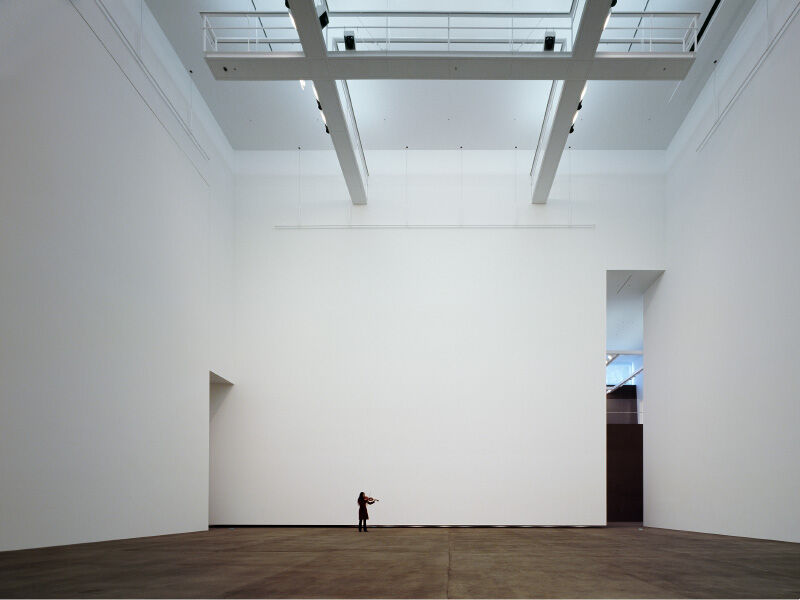
18. Aleko Hall
Situated in the center of the exhibition spaces, the huge, four story Aleko exhibition space is 21 meters long, 21 meters wide, and 19.5 meters tall. The floor is hard-packed dirt. 15 meter wide, 9 meter tall backdrops for the ballet Aleko are displayed here.
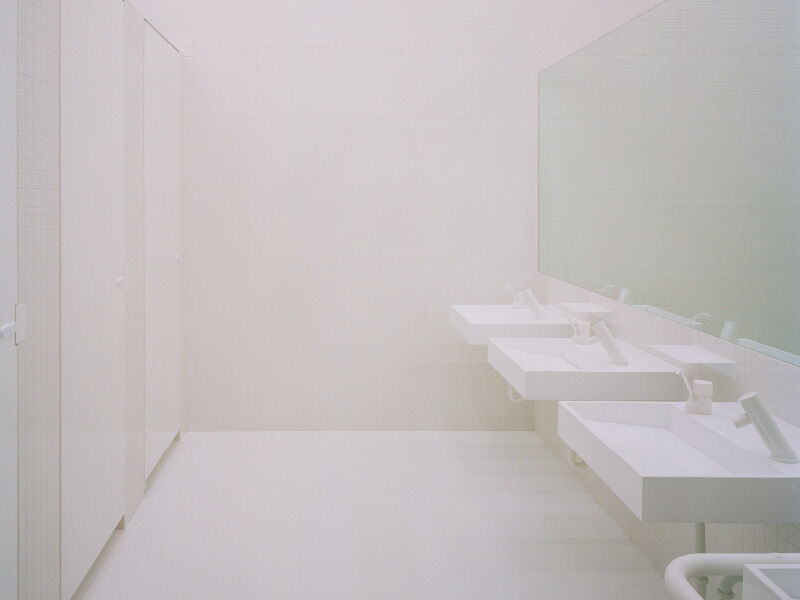
19. Restrooms
Restrooms have been provided throughout the museum. The rooms appear pure white at first glance, but actually the color of the grout between the tiles is a pale pink. This gives a faint pink coloring to the spaces, slightly improving the mood of users the moment they enter.
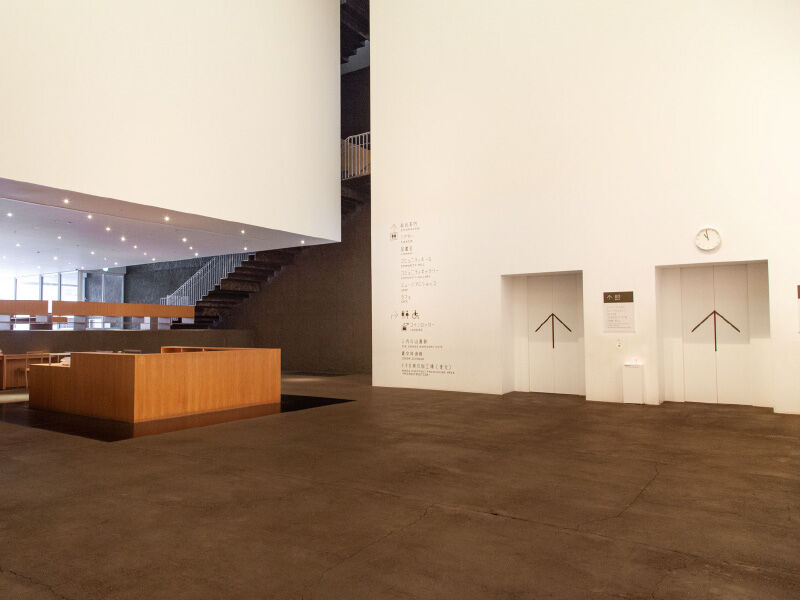
20. Elevator Hall
Descend from the first floor to floor B2 via the museum’s main elevator and a huge space will appear before your eyes. Here you can view the Aleko Hall, Temporary Exhibition Space, and the museum’s collection exhibition. You can also access an outdoor passageway which will bring you up close to the Aomori-ken (Aomori-ken Dog) (closed in winter).
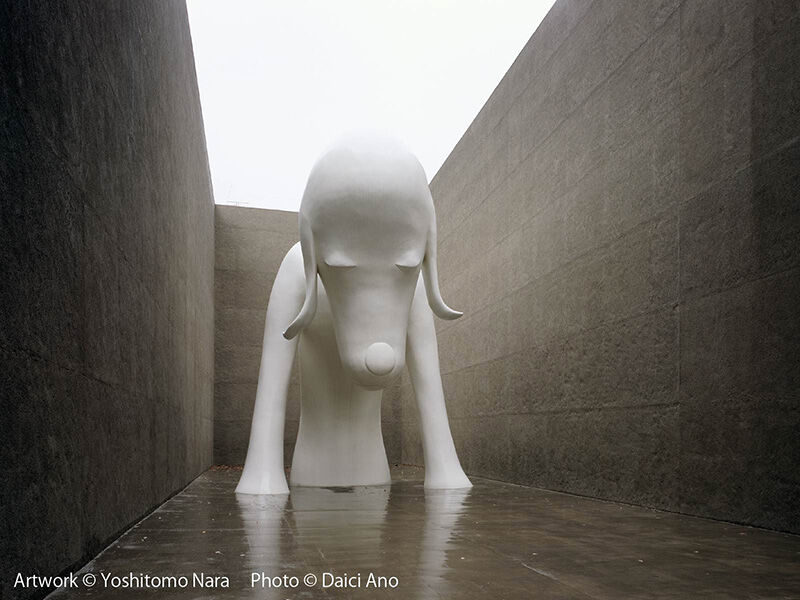
21. Aomori-ken (Aomori-ken Dog)
The museum commissioned Yoshitomo NARA to create two works of art to be integrated into the museum itself. The first is the Hakkakudo. The second is this, Aomori-ken (Aomori-ken Dog). The 8.5 meter tall sculpture is installed in an outdoor trench extending away from the Permanent Exhibition Space. When it snows, snow accumulated on the head resembles a hat, giving the sculpture a different feeling from usual.
Services and facilities
Information for visitors coming by car, bus, or taxi
- Parking lot spaces
-
Standard size cars: 350 spaces
Large-sized vehicles: 30 spaces
Vehicles for people with disabilities: 18 space
Taxi pool: 5 spaces
- Parking fee
-
Free
Information for visitors with children
- Multipurpose toilets Nursing room 1F Stroller rental 1F Children’s Playroom B1F
-
In the Children’s Playroom, families with children can relax; enjoy gorgeous picture books; and play with building blocks from Swiss company Naef, renowned for their beautiful forms and colors. Colored pencils are also provided for enjoying drawing.
Children’s Playroom hours: Saturdays, Sundays, and Public Holidays 10:00-12:00 and 13:00-15:00.- *Please use the elevator at the back of the Community Hall on the first floor when visiting the Children’s Playroom.
- *No childcare service is provided; please ensure that your child is accompanied by an adult at all times.
- *Please refrain from eating and drinking in the Children’s Playroom.
- *Please use the nursing room on the first floor for nursing and diaper changes.
Information for wheelchair users
- Wheelchair rental 1F
-
The museum is wheelchair accessible. Wheelchair rentals are also provided at the information desk on the first floor.
Baggage check
- Baggage check 1F Lockers 1F Lockers B2F
-
Large suitcases, etc. can be checked at the information desk on the first floor.
Coin operated lockers which return your coin upon key return are provided in the first floor entrance gallery.- *Locker use is limited to museum hours.
- *Please note that the museum bears no responsibility for any losses or accidents, etc. which may occur during use.
Museum facility information
- Museum Shop
-
Museum facility information The Museum Shop sells museum merchandise, art books, exhibition catalogs, and more. Exhibition catalogs are also available for mail order purchase. Contact the phone number below for inquiries. Hours: 9:30 a.m.-5:00 p.m. Inquiries: 017-761-1420
- The Museum Shop is closed on days when the museum is closed.
- The Museum Shop may be used without purchasing museum admission.
- Los Cuatro Gatos cafe
-
Enjoy an original menu of cafe selections made with local, Aomori Prefecture ingredients along with a view of the Hakkakudo.
Hours: 11:00 a.m.-3:00 p.m. (L.O. 2:30 p.m.)
Lunch: 11:00 a.m.-2:00 p.m.
Seating capacity: 84 High chairs for children: 3
Inquiries: 017-761-1401- The cafe is closed on days when the museum is closed.
- The cafe may be used without purchasing museum admission.
- Library
-
Here you can peruse materials on artists whose works are in the museum’s collection as well as Japanese and global art history materials, art journal latest editions, DVDs, and more.
Hours: 10:00 a.m.-4:00 p.m.
- The Library is closed on days when the museum is closed.
- The Library may also be temporarily closed for collection inventorying purposes.
- Library materials may only be used on-site and are not available for borrowing.
- Community Hall
-
A free rest and break space with seating for 40 people.
Food and beverages are permitted in the Community Hall.
Aomori-ken Dog Passageway
Open hours
9:45 a.m.- 4:30 p.m. The passageway entrance will be locked at 4:30 p.m.
* There are two staircases in the passageway, and the walk will take 10-15 minutes overall. If you have difficulty ascending and descending stairs, please speak to museum staff.
*Closed during winter (when snow begins to accumulate)
Admission
No fee required
About the Aomori-Ken(Aomori-ken Dog) Passageway
The Aomori-Ken(Aomori-ken Dog) Passageway was built in 2008 to provide an up-close view of Nara Yoshitomo’s Aomori-Ken (Aomori-ken Dog )sculpture, which is displayed in the museum’s outdoor space.
When the museum opened in 2006, the sculpture could only be viewed through a window from inside an exhibition room. In response to many visitors’ requests to view the Aomori-ken Dog from up-close and the artist’s desire to meet those wishes, and the passageway was opened in 2008.
The passageway was built after the museum was opened as a way to access the Aomori-ken Dog from outside the museum due to various structural restrictions. The path includes staircases and takes about 10-15 minutes to traverse.
Please speak to museum staff if you have trouble walking or have a stroller. Depending on the weather, we may allow you to use this door.
Passage via the exhibition room door is restricted in order to protect the artworks from humidity and insects. Thank you for your cooperation.
※You cannot use the Aomori-ken Dog Passageway on days the museum is closed.
※Eating, drinking, and smoking are prohibited in this area.
※Excluding guide and service dogs, animals are not allowed in this area.
※The passageway may be closed due to poor weather.
※You can view the Aomori-ken Dog year-round from inside the permanent exhibition room year.